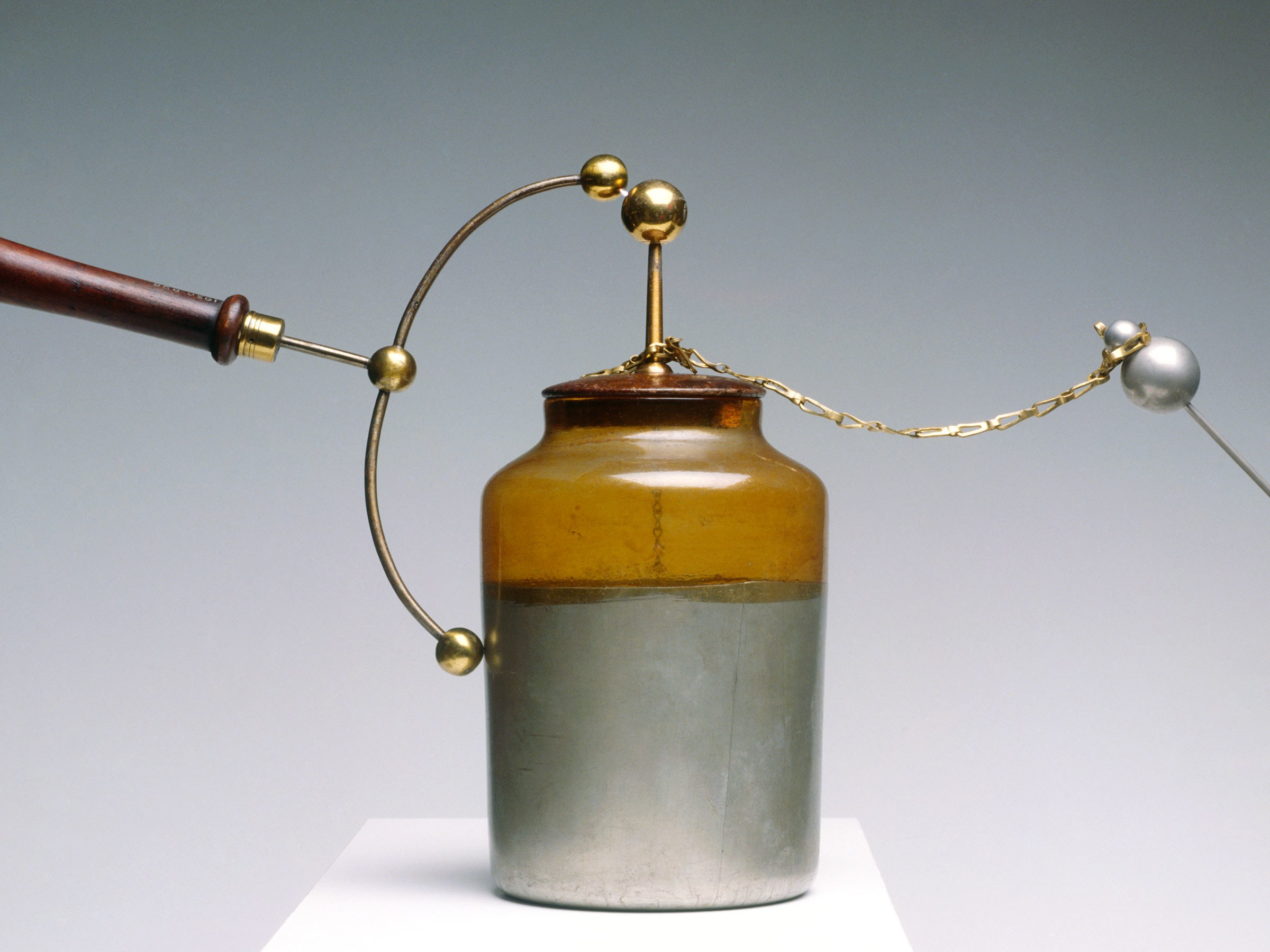 Leyden jar: Originally invented in 1745 by Pieter van Musschenbroek at the University of Leiden (Leyden), the Netherlands, it was a device used to build and store static electricity.
Leyden jar: Originally invented in 1745 by Pieter van Musschenbroek at the University of Leiden (Leyden), the Netherlands, it was a device used to build and store static electricity.
 A Leyden jar consists of a glass jar with an outer and inner metal
A Leyden jar consists of a glass jar with an outer and inner metal coating covering the bottom and sides nearly to the neck. A brass rod terminating in an external knob passes through a wooden stopper and is connected to the inner coating by a loose chain. When an electrical charge is applied to the external knob, positive and negative charges accumulate from the two metal coatings respectively, but they are unable to discharge due to the glass between them. The result is that the charges will hold each other in equilibrium until a discharge path is provided.
coating covering the bottom and sides nearly to the neck. A brass rod terminating in an external knob passes through a wooden stopper and is connected to the inner coating by a loose chain. When an electrical charge is applied to the external knob, positive and negative charges accumulate from the two metal coatings respectively, but they are unable to discharge due to the glass between them. The result is that the charges will hold each other in equilibrium until a discharge path is provided.
How it works:
It works similar to a small experiment that we can observed in daily life. If we take a plastic comb and put slight hair oil on it and then if we start combing our hair, after certain time, we find that our hair are getting attracted to comb.
It basically is the static electricity that is getting generated in the comb that attracts the hair from a certain distance.
Similarly in Leyden’s jar, the movement of the knob and the chain creates a static charge by rubbing on the inner metal coating, however this charge is not dissipated as there is glass in between the inner and outer metal coatings
So we can say we have stored the electricity in the jar.
Significance:
Franklin and others were working on a theory which considered electricity to be a fluid, and they felt that if electricity is a fluid that we should be able to store as a fluid like we store water.
The Leyden’s jar became a case in point for them, where they argued that just like we can store water in a jar, we can store electricity in Leyden’s jar,,hence electricity seems to have fluid like properties.
Today’s Uses
A modern day capacitance used widely in electronic equipments is similar to a Leyden’s jar, where in sheets of metal are separated by vacuum to store electricity in them.













[…] Franklin’s theory gave explanation of a special apparatus ‘Leyden’s jar‘ and his success in doing so was […]